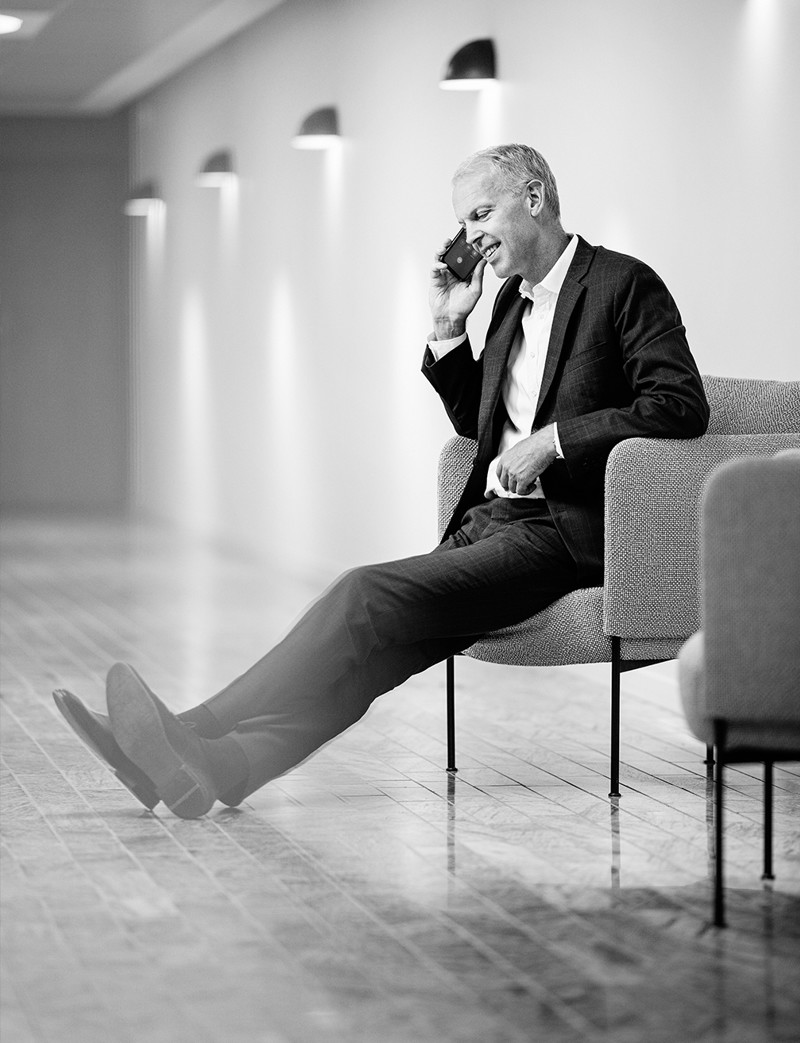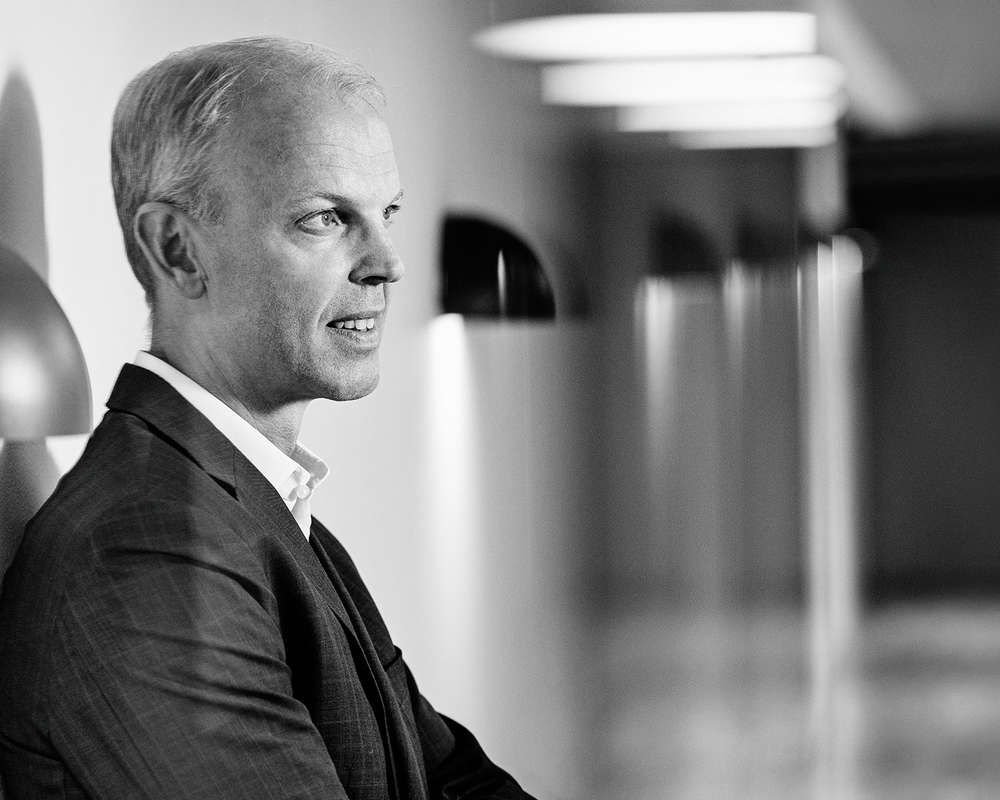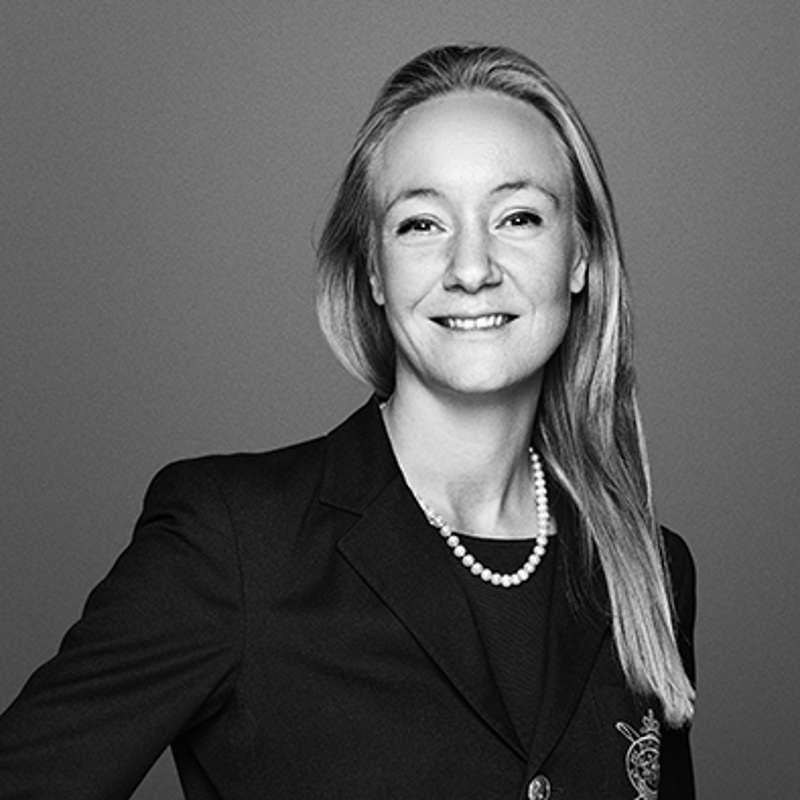The CFO area holds much cross-disciplinary knowledge. Knowledge that is quietly hidden in clever brains or in a labyrinth of folders. Until somebody asks for it. But it doesn’t have to be like that. At least not according to Thomas Dyhrberg Nielsen, CFO of Danica Pension. He wanted the knowledge held by the CFO area out of the office chair and into the organisation. And this was the beginning of a strategic project intended to put the employees’ curiosity as well as the cohesive force of the business in the lead.
The sun is beating down from a clear blue sky, and it is hot though it is still early in the summer. We are set to meet Thomas Dyhrberg Nielsen at Danica Pension’s headquarters for a talk about the strategic project launched by him together with the CFO area management group. In this interview, you can read how they approached the project, and what is still lying ahead. Though in its modest beginnings, the project has already generated some experience for inspiration.
A new united CFO area
Thomas has been Danica Pension’s CFO for almost a year. So, though there is a pleasant, laid-back aura of calmness about him, this past year has been just the opposite. He starts the interview by telling how he had, already after three-four months, made observations and generated thoughts that helped start off the strategic project.
”Danica Pension’s CFO area is characterised by extremely skilled people with a solid understanding of their tasks and a desire to help drive progress in the area as a whole. So, when a new CFO area was established consisting of the former independent areas of Finance, Actuarial, and Risk Management, I thought that a common strategic project would be a good start. Partly with the purpose of bringing together the new management group that I was now to head, partly to ensure that our knowledge was collected and shared across the three areas,” Thomas begins our talk.
”It takes great efforts to get to know each other both as a management group and as departments. And in the management group, it became clear that we had much in common. But also that we needed to formulate what was to connect us across the area. So, one purpose of the project was to begin establishing a common framework for the new CFO area.”
”We also wanted to further develop the nature of the tasks performed to get closer to a business partnering function. This was not a specific request of the business, but they have welcomed it positively and eagerly. Thus, it has not been necessary for us to win a seat at the decision table. Rather, we have been looking through an open door to realise that a chair had already been set out for us,” Thomas says smilingly.
A tangible vision for everyday life
Thomas tells us how he started the project defining a roadmap for the CFO area together with the management group to get a vision in place. To them the process and the possibility of twisting and turning the content together were more important than the words that were to describe the vision, since the purpose was to establish a united approach with a vision that embraced and motivated everyone – even on a bleak Tuesday.
So, after an intense six-week process and numerous workshops, they had 21 focus areas, including action plans with specific underlying activities, ready for presentation to and involvement of the employees. This took place on an ‘employee day’ in May 2022, when the entire CFO area gathered for 24 hours.
”Our purpose of the employee day in May was to involve the employees in the vision and to motivate them, and it was a very energising and valuable experience – both for the employees and for us as a management group. They were very positive about being involved and had a feeling of being part of a more encompassing strategy. And I do hope and have a feeling that now the individual employees can see on which strategic peg to hang their tasks.”
But what was the essence of the vision that the employees were now to become part of?
A need to release employee curiosity
”One of the issues that we considered in depth, which has become a major part of our vision, is the desire to cultivate a greater degree of curiosity in our culture. I realise that it may sound like an empty phrase. But if we distance ourselves from the word as such, we could present an example such as questioning more deliveries and the use of them – for example in connection with a reporting task. Another example could be to leave the financial glasshouse for a while. So, rather than ascertain that an inappropriate decision has been taken, one should question why it has been taken and consider the possibility of remedying this type of decision in the future,” Thomas says by way of elaboration.
”Basically, it is about us in the CFO area having a desire to become better at seeing where and how our knowledge can contribute and be of use. We can get wiser about this as individuals and as an area only by knowing what goes on across the organisation, sparring, exchanging ideas, and being curious and – not least – by being generous with our knowledge. Since this makes it attractive for the business to involve us.”
”It is also about showing that we are better at solving some of the everyday problems through concerted action. We would like to do away with the ‘quiet isolation’ that may arise inadvertently, where you handle a task and make the best of it without any questioning or involvement of others.
In the management group, we sensed a desire to access each others’ areas with the purpose of adding knowledge and improving the overall sum. A desire that we could also see bud in the individual departments, so we decided to cultivate and support this to the full”, Thomas brings home his point.

On 1 June 2021, Thomas Dyhrberg Nielsen took up the position as CFO of Danica Pension. The two-metre tall auditor has been a basket ball player and therefore brought a sense of team spiret and a striving to always do things better with him into the management. Thomas has previously been the CFO of both PFA Pension and SEB Pension.
A unifying ’us’ rhetoric
Empty phrases do not impress finance professionals – or anybody else in Danica Pension’s new CFO area for that matter. So, while working with the roadmap, Thomas and the management group were fully aware that the vision should make sense in practice and be one that the individual management group members would defend vehemently and believed in. And it should be characterised by a pervasive ‘us’ rhetoric to enable both employees and the management group to recognise themselves in it.
”We have a CFO area with employees who are pragmatic and dynamic. So, they are not interested in long PowerPoint presentations. Things must be tangible, and we have focused on this. Therefore, we have not made long, backward-looking ’as-is’ analyses focusing on problems related to our work on the roadmap. Rather, the assistance received has facilitated our talk about where we are heading, based on our everyday work and the good elements to build on,” says Thomas.
Good filter coffee always contains grounds
The dialogues in the management group have been rewarding, but also challenging. Irrespective of the interest in meeting about all the agenda items, it is easier said than done.
”I wouldn’t say that our dialogues have been complicated. But we have needed more time to discuss some of the subjects. One example is our desire to work more with business partnering. And because it is primarily embedded in one department, we have needed to find a good solution that will make it relevant for all employees and to be distinct on what it would specifically mean in terms of functions, roles, and measures. And that was a difficult exercise,” says Thomas and continues:
”Therefore, it was important to have a thorough discussion and to define what it means to be a business partner to various persons so that we could provide specific examples. And not least verbalise what the employees can do in case they receive knowledge that they don’t feel comfortable passing on – even if the knowledge in question is business critical,” Thomas elaborates.
”Another example that required a few extra considerations was the distribution of responsibilities in connection with data and the talk about a common data warehouse so that data could become more centrally and correctly accessible to everybody. It came close to the individual managers’ areas of responsibilities, and rather fast focus turned to risks, which increased even more the need for a final solution. So, in that case we spent much time finding a common standpoint that we were all comfortable using as a launching pad for the final solution.”
The project threw the potential into the spotlight
”While working with the roadmap, I have as a CFO acquired even more insight into the personal profiles that I have in the management group. And, I have come to know a lot of employees better, thereby becoming aware of the wealth of competences and knowledge found in the community that is now the CFO area. That is the greatest benefit that I personally have obtained from the onset of the project. It has been confirmed to me that all that insight contains a huge potential to be released and to be used as a contribution to Danica as a business.”
”We’ve only just introduced all these measures. But we have begun to talk more with each other across the CFO area, and curiosity is beginning to grow. So, in this way a joint reference frame has been created, and we have come closer to each other in the management group as well as in the CFO area.”
Thomas says that the next thing to focus on will be the management group’s follow-up via action plans and underlying activities as an anchor during the next couple of years.
”So, in August 2022 we’ll make a status on the progress made as well as on our ability to establish momentum as a management group. By then, we will also start working specifically with the long-term action plans in which we have localised activities and associated measurement points. If we relate this to our talk about a common data warehouse, one of the specific tasks will be to design and develop a CFO data mart to collect, structure, and transform relevant data in the CFO area. Quite simply, to make data and insights more homogeneous and more easily and quickly accessible across the CFO area. Everything is very exciting right now and I look forward to seeing the vision live even more in the various teams through the many underlying activities that we have defined,” Thomas ends our talk in a voice of pleasurable anticipation.

Basico Change Model
Basico’s Change Model can help you achieve successful change
On the basis of our own experience with change projects, we have developed Basico’s Change Model.
A model that will help you implement strategic change in an effective way ensuring its embeddedness in your organisation.
Especially three features of the model will help your project land in the pile of successful change projects.
1. It provides an iterative, dynamic, and learning process:
The model is flexible and scalable, allowing you to adjust it in terms of scope, duration, and execution.
More specifically, this means that focus is on the context and needs of your organisation. The four-phase sequence is given, but you do not need to prepare a detailed project plan right from the start.
Each individual phase will not be planned in detail until the previous phase has been completed, since the insight and learning gained from the previous phase help define the content, structure, and format of the next phases.
This ensures solutions reflecting new knowledge and changes and the most efficient use of project resources.
2. It establishes a thorough ’Case for Change’:
The first phase is extremely important, since it helps secure a thorough understanding of the problems that you would like to be solved.
Therefore, the model focuses exclusively on the ambition behind the change – why must the challenges be solved and this change be made, and what is the purpose of the change?
We refer to this as establishing a ’Case For Change’.
3. It embeds the change in the organisation:
The model helps ensure cooperation and employee involvement throughout the project period.
Through analyses of the challenges, reasons, and the ambition as well as through the solution design, planning, prioritisation, and implementation, including embeddedness, adjustment, and learning.
So that the solutions developed (processes, systems, behaviour, etc.) are solidly embedded in the organisation.
Are you facing a strategic change project?
Basico’s Change Model is a central element of our consultancy as well as of our project and change deliveries. The model contributes to lasting and valuable change by ensuring a thorough understanding of the problems and by ensuring that the changes are embedded in the organisation.
Would you like to receive a detailed description of Basico’s Change Model? Or are you faced with a demanding change? Then, don’t hesitate to contact us so that we can help you achieve the purpose of your change project.

 en
en
 da
da



